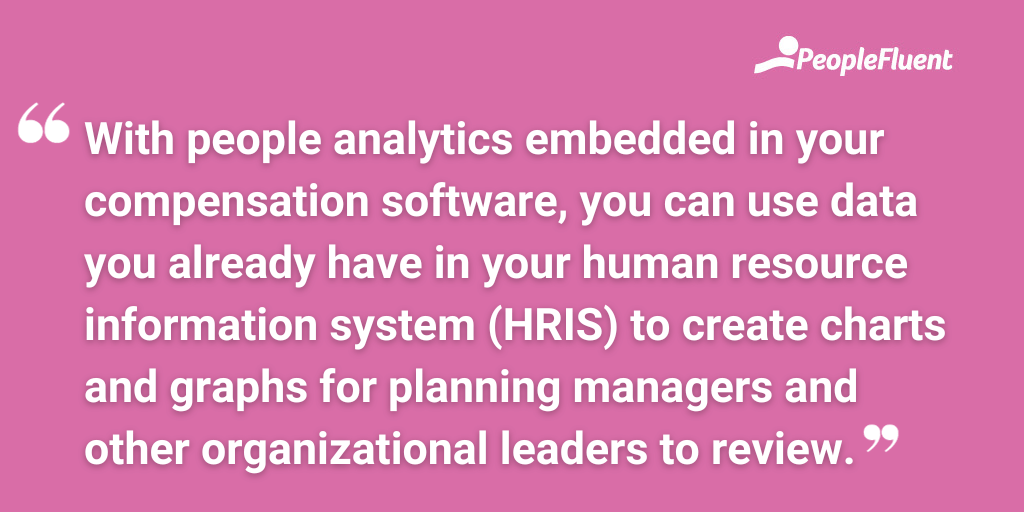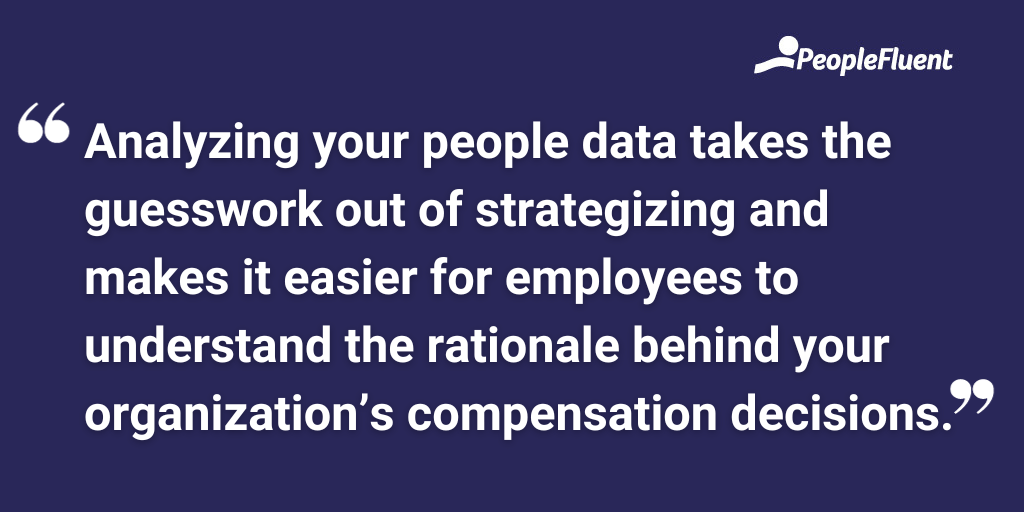Published: Nov 7, 2023Time to read: 5mins Category: Compensation
Why Analytics Is Essential to Compensation Planning
There’s a lot to keep track of when it comes to managing compensation cycles for enterprise businesses. In this blog post, discover how analytics empower you to make data-informed decisions that will streamline your compensation planning.
Employee engagement hit an all-time high in 2022, but that still only amounts to 23% of workers who feel engaged with their jobs—and 51% of the global workforce is actively looking for their next employment opportunity, with increased pay being a top reason for seeking a new job. To keep employees satisfied and engaged at work, it’s more important than ever to ensure you’re offering competitive compensation plans that align with your organization’s talent management goals.
The thing is, trying to create or improve your compensation plan without a starting point would be time-consuming and ineffective. Before you can implement a new strategy, you need to understand your organization’s current compensation practices and future goals. That’s where compensation analytics comes into play.
Whether you want to be more competitive in the marketplace or work to diminish wage gaps (or both!), you have to understand your workforce data before you can move forward. Conducting a pay analysis is the first step to streamlining and improving your current compensation practices. This means gathering baseline data about your workforce and your award practices. Once you understand your organization’s starting point, you’ll be able to more effectively plan and implement your new compensation cycle strategy.

READ MORE ON ANALYTICS | ‘How to Drive Your Compensation and Pay Equity Planning Forward With People Analytics’
Leverage Your Compensation Software to Gather and Analyze Data
Maybe you’re concerned about pay gaps existing across your entire organization, or maybe there are specific departments causing you some concern. Perhaps you just want to be sure you’re offering attractive total rewards packages in a highly competitive market. Regardless of your goals, you’ll need to gather an extensive amount of information about your workforce demographics and prior compensation practices. Enterprise organizations will have hundreds or possibly thousands of employee records to assess, as well as job- or department-specific data points and overall organizational practices.
The following table gives a more detailed look at the kind of information you may need to gather during your pay analysis:
Commonly Collected Pay Analysis Data Points
| Employee Demographics | Job-Specific Data Points | Organizational Data Points |
|---|---|---|
| Gender | Base salary rates, overtime, and bonuses | Salary grade range benchmarks and market data |
| Race or ethnicity | Compa-ratio, range penetration, market percentile | Compa-ratio, range penetration, and market percentiles of other similar organizations |
| Disability status | Job descriptions and required skills | Job descriptions and required skills |
| Veteran status | Hire dates and time spent in a role | Former compensation practices and initiatives |
| Performance ratings and disciplinary actions | Recent acquisition or merger history | |
| Geodifferential information |
Although it’s certainly possible to collect this information manually, doing so is a tedious and inefficient process that leaves too much room for human error. Rather than spending your time and resources manually sifting through vast amounts of people analytics, let your compensation management system do the heavy lifting. With people analytics embedded in your compensation software, you can use data you already have in your human resource information system (HRIS) to create charts and graphs for planning managers and other organizational leaders to review.
You can also export data to Excel spreadsheets or other reporting tools. This is especially useful if your organization is performing pay equity analyses as required by the United States Office of Federal Contract Compliance Programs (OFCCP), the US Equal Employment Opportunity Commission (EEOC), or other regulatory agencies.
Integrate Your Compensation Software and HRIS
Your compensation software can save you extensive time and resources by generating analytics reports, but the data in those reports doesn’t come out of thin air. While you could manually input employee data, integrating your HRIS with your compensation software will streamline your planning and make your reports more accurate. As long as the information stored in your HRIS is being updated regularly, then the data it stores will typically give you the most current and accurate picture of your workforce.
Taking advantage of reports in your compensation software also reduces (or possibly eliminates) the need for spreadsheets. In many cases, the reports powered by an integrated HRIS and compensation tool help organizations to:
- Automate processes
- Save staff time
- Adhere to guidelines and regulations
- Ensure calculations are correct by reducing human error
- Manage complex scenarios like prorated incentive pay
Leveraging compensation software also helps organizations ensure that data stays secure. You can ensure that the information in your reports is only sent to people who need to see it. Additionally, you can set up permissions that limit what kind of data someone can view based on their role in your organization. These extra layers of protection keep your workforce data secure so that only those who truly need the information can access it.

LEARN MORE | ‘3 Strategies to Help Employees Understand Their Total Rewards Package’
Use Analytics to Help Employees Understand the “Why”
To attract and retain the skilled professionals your organization needs in order to thrive, you need to implement a competitive and transparent compensation plan. Analyzing your people data takes the guesswork out of strategizing and makes it easier for employees to understand the rationale behind your organization’s compensation decisions.
When your workforce understands the “why” behind your compensation choices, they feel more valued and respected. A strong compensation strategy that’s clear to your workforce can also help your employees feel more engaged at work and lead to increased job satisfaction, productivity, and retention rates. Compensation analytics is a powerful, essential tool that helps you be more transparent while enhancing your planning strategy.
Master Compensation Planning
Want to learn more strategies for improving your pay practices? Download our ebook, ‘Mastering Compensation: 3 Strategies for Streamlined & Effective Planning,’ or request a PeopleFluent demo today to see first-class compensation software in action.